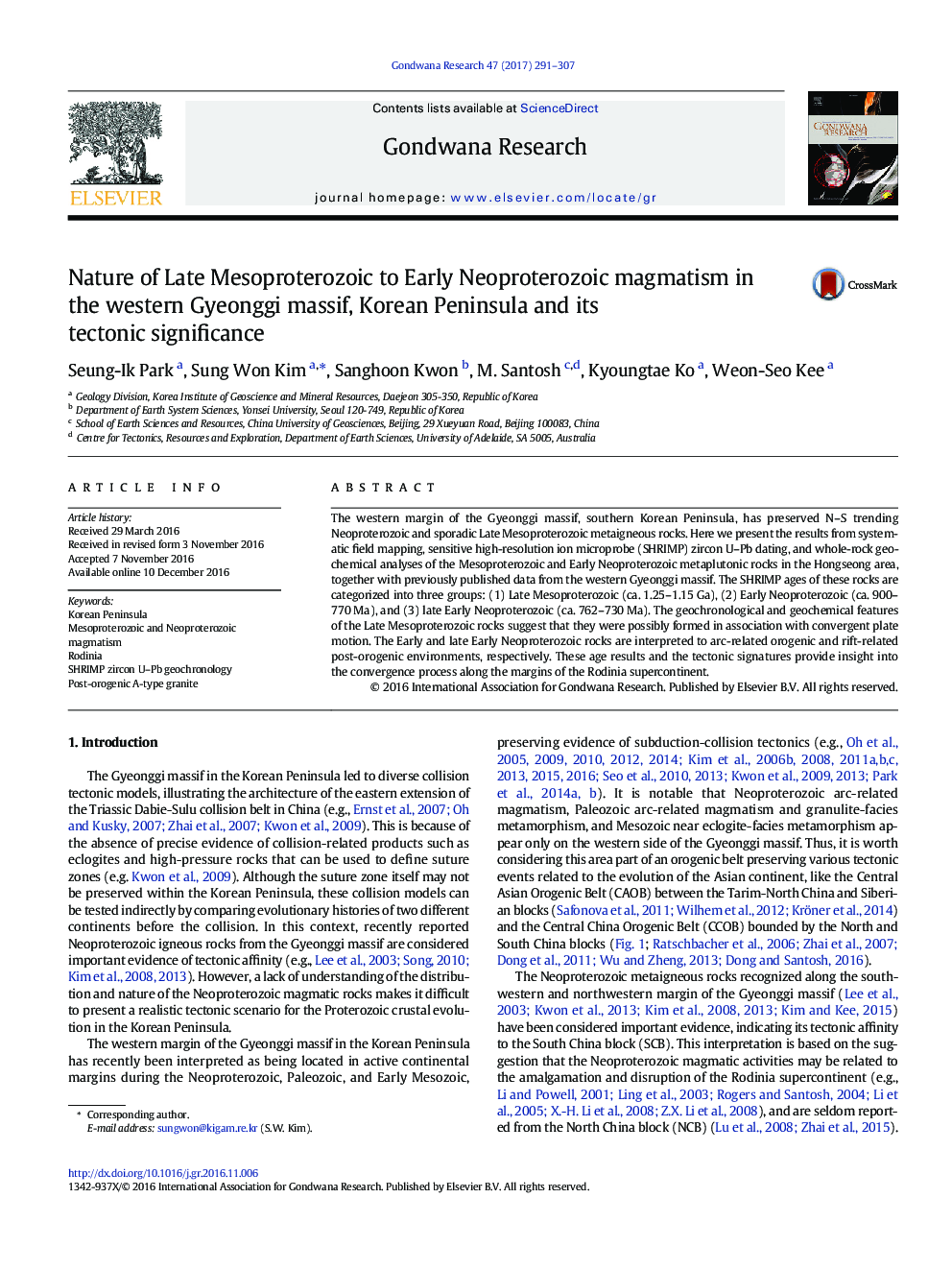| Article ID | Journal | Published Year | Pages | File Type |
|---|---|---|---|---|
| 5785439 | Gondwana Research | 2017 | 17 Pages |
â¢Late Mesoproterozoic to Middle Neoproterozoic arc magmatism in the western Gyeonggi massif, Korean Peninsulaâ¢Late Mesoproterozoic to Middle Neoproterozoic metaplutons display the evolution of the Rodinia supercontinentâ¢Late Mesoproterozoic to Middle Neoproterozoic metaplutons provide the convergence process along the margins of the supercontinent
The western margin of the Gyeonggi massif, southern Korean Peninsula, has preserved N-S trending Neoproterozoic and sporadic Late Mesoproterozoic metaigneous rocks. Here we present the results from systematic field mapping, sensitive high-resolution ion microprobe (SHRIMP) zircon U-Pb dating, and whole-rock geochemical analyses of the Mesoproterozoic and Early Neoproterozoic metaplutonic rocks in the Hongseong area, together with previously published data from the western Gyeonggi massif. The SHRIMP ages of these rocks are categorized into three groups: (1) Late Mesoproterozoic (ca. 1.25-1.15Â Ga), (2) Early Neoproterozoic (ca. 900-770Â Ma), and (3) late Early Neoproterozoic (ca. 762-730Â Ma). The geochronological and geochemical features of the Late Mesoproterozoic rocks suggest that they were possibly formed in association with convergent plate motion. The Early and late Early Neoproterozoic rocks are interpreted to arc-related orogenic and rift-related post-orogenic environments, respectively. These age results and the tectonic signatures provide insight into the convergence process along the margins of the Rodinia supercontinent.
Graphical abstractDownload high-res image (391KB)Download full-size image
